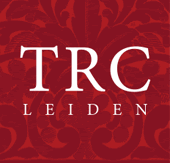The designs and texts for the cards were worked in series with colourful, free style embroidery on silk gauze panels. The individual embroideries were cut out and stuck to a card frame that was embossed with a decorative edging.
For the embroidery itself, a wide range of stitches were used. These included the back stitch, basket weave stitch, individual cross stitches, herringbone stitch, reverse herringbone stitch (in order to create a shadow work effect), double running stitch (also known as the Holbein stitch), satin stitch, stem stitch, as well as various composite stitches.
 A set of 25 images that were pre-embroidered by machine. The images are ready to be cut out and glued onto a card ground. The main text on the card reads: "Peace 1919" (TRC 2015.0421). Click illustration for TRC catalogue entry.In the past, various questions have been raised about these cards, especially as to how the cards were decorated, and by whom. Several different answers were given, the most popular and persistent (and sentimental) was the one that said that the images were hand embroidered by Belgian and French women who had been afflicted by the war.
A set of 25 images that were pre-embroidered by machine. The images are ready to be cut out and glued onto a card ground. The main text on the card reads: "Peace 1919" (TRC 2015.0421). Click illustration for TRC catalogue entry.In the past, various questions have been raised about these cards, especially as to how the cards were decorated, and by whom. Several different answers were given, the most popular and persistent (and sentimental) was the one that said that the images were hand embroidered by Belgian and French women who had been afflicted by the war.
But this explanation is not acceptable. Would these women and girls have really been able to hand embroider tens of thousands of cards? An important detail in this respect is that none of the individual postcards so far examined show any indication of a drawn or printed design that would have been essential if the embroideries were being made by hand. In addition, large sheets have been preserved (see the illustration) with series of comparable designs, ready to be glued onto the cardboard cards.


